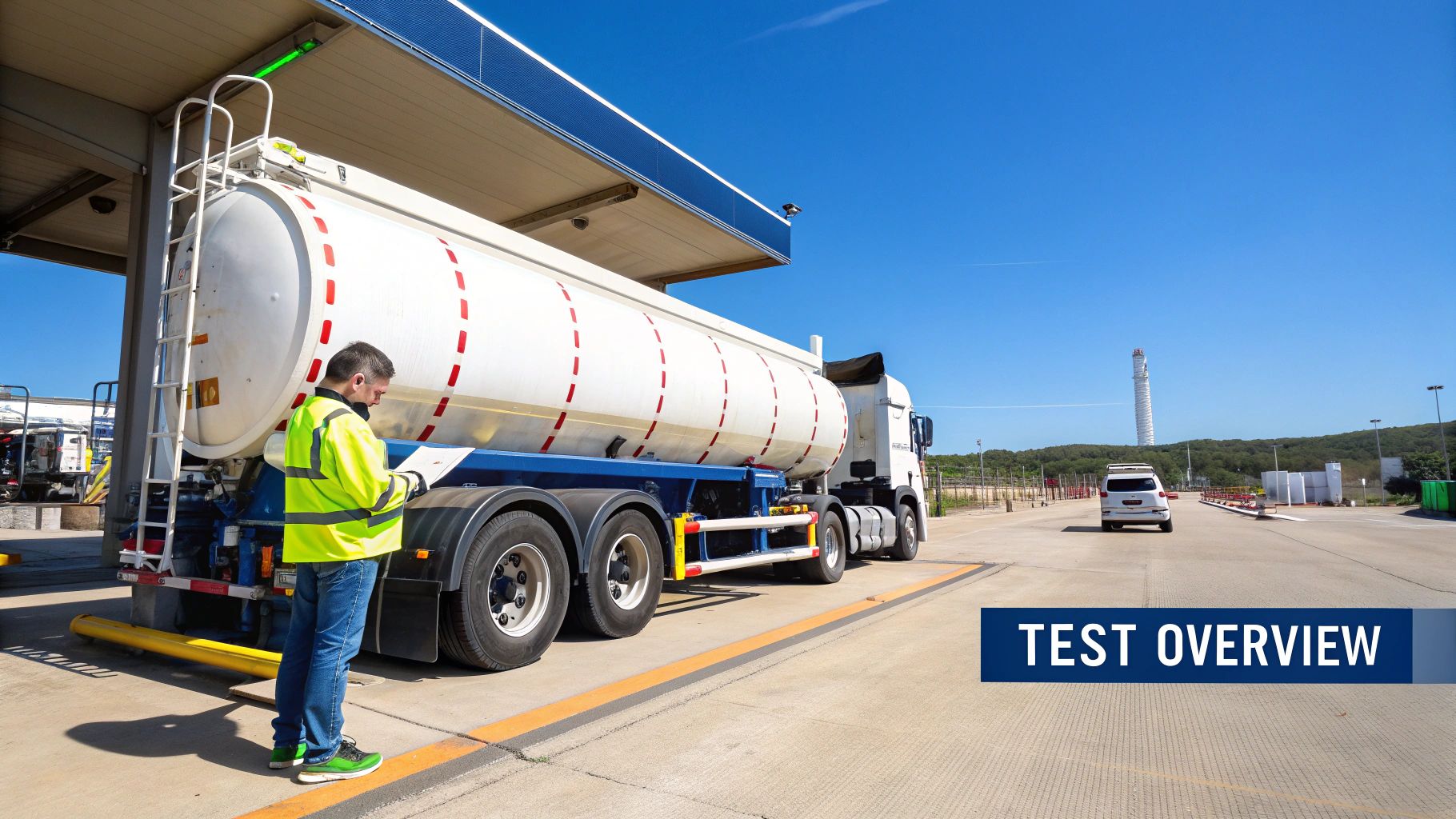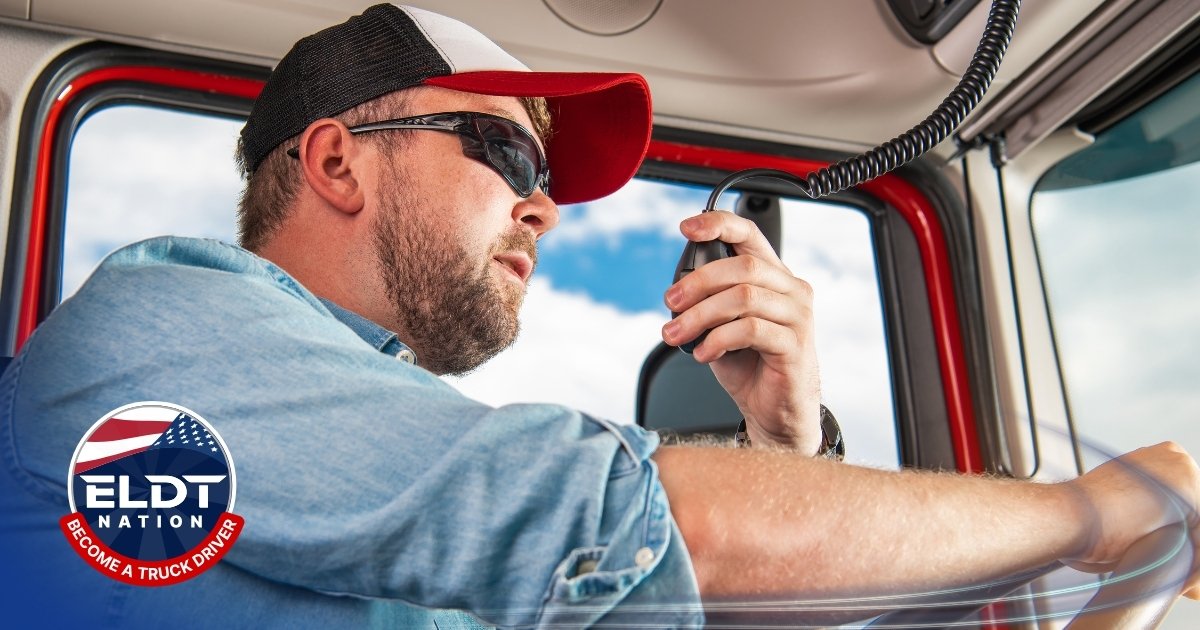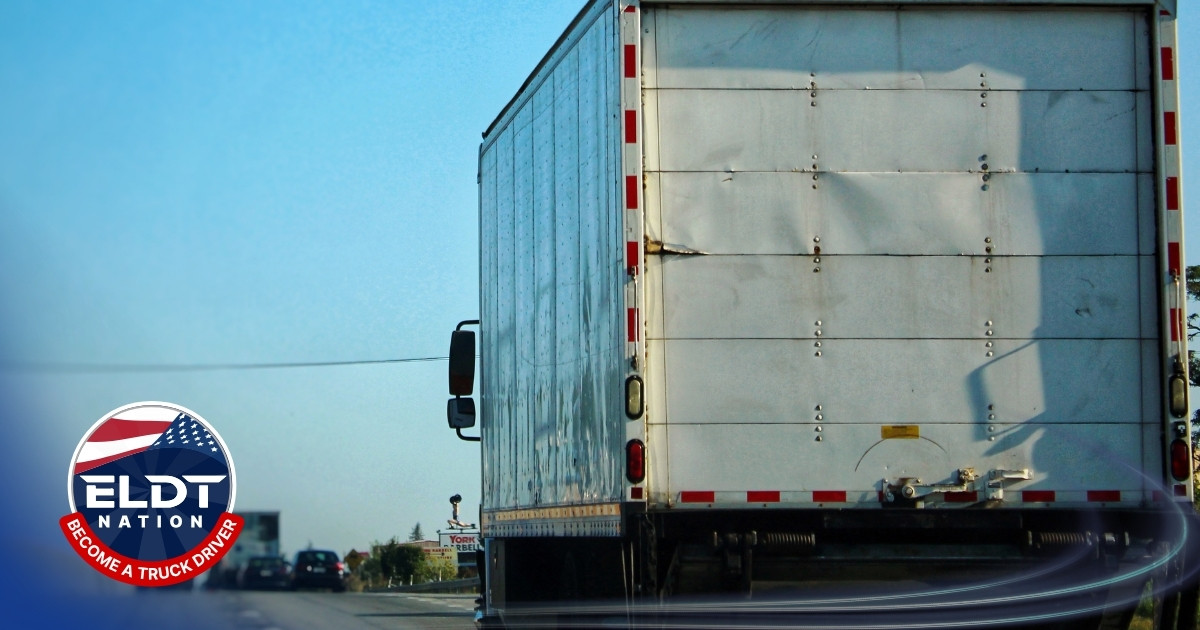Pass Your Test for Tanker Endorsement on the First Try
Thinking about getting your tanker endorsement? Smart move. Passing the tanker endorsement test is your ticket to hauling bulk liquids. It can also open the door to some of the best-paying jobs in trucking. This adds the N endorsement to your CDL. It proves you have the skills to handle the unique way liquid freight moves.
What a Tanker Endorsement Really Means for Your Career
Getting a tanker endorsement is one of the best things you can do for your trucking career. It tells companies you can handle special loads. This includes everyday liquids like milk and water to tougher cargo like fuel and chemicals.
This isn’t just another stamp on your license. It's a key that opens doors to better routes—and often, more money.
The industry always needs drivers who know how to pull a tank. It’s a whole different world from a dry van. That liquid sloshes around, creating a "surge." This surge constantly shifts your center of gravity. It affects everything: your balance, your braking distance, and how you take turns.
The Rules of the Road for Tankers
The rules are pretty clear. Back in 2011, the Federal Motor Carrier Safety Administration (FMCSA) made the tanker endorsement a requirement. This makes sure drivers are trained for these unique challenges.
You’ll need the endorsement if you’re hauling liquids or gases in a tank with a capacity over 118 gallons. You'll also need it if you have portable tanks that add up to a combined capacity of 1,000 gallons or more.
And this isn't just about the classic big tankers you see on the highway. Hauling a few large liquid totes on a flatbed could easily put you over the limit. That would require an N endorsement. It's something a lot of drivers miss.
When You Need a Tanker Endorsement
Here’s a quick table to help you know if your load needs the N endorsement.
Basically, if it's a liquid and it's in a big enough container, you're going to need that endorsement.
Breaking Down the N, H, and X Endorsements
It’s easy to get these letters mixed up, so let's keep it simple.
- N Endorsement: This is your basic tanker stamp. It says you can haul non-hazardous liquids like milk, juice, or water.
- H Endorsement: This is the hazmat endorsement. It's for hauling hazardous materials, but they don't have to be in a tank. Think barrels of chemicals in a dry van.
- X Endorsement: This is the powerhouse combo. Getting the 'X' means you’ve passed both the tanker and hazmat tests. It gives you the most flexibility. You can haul hazardous liquids like gasoline or industrial chemicals in a tanker.
For a lot of drivers, the X endorsement is the real prize. It makes you a more valuable driver to any fleet and really opens up your job options.
Passing the tanker endorsement test is your first step. It proves you get the key ideas of how liquids move and the special safety rules. For a closer look at what the N endorsement is all about, check out our deep dive here: what is a tanker endorsement.
What's Actually on the Tanker Knowledge Test
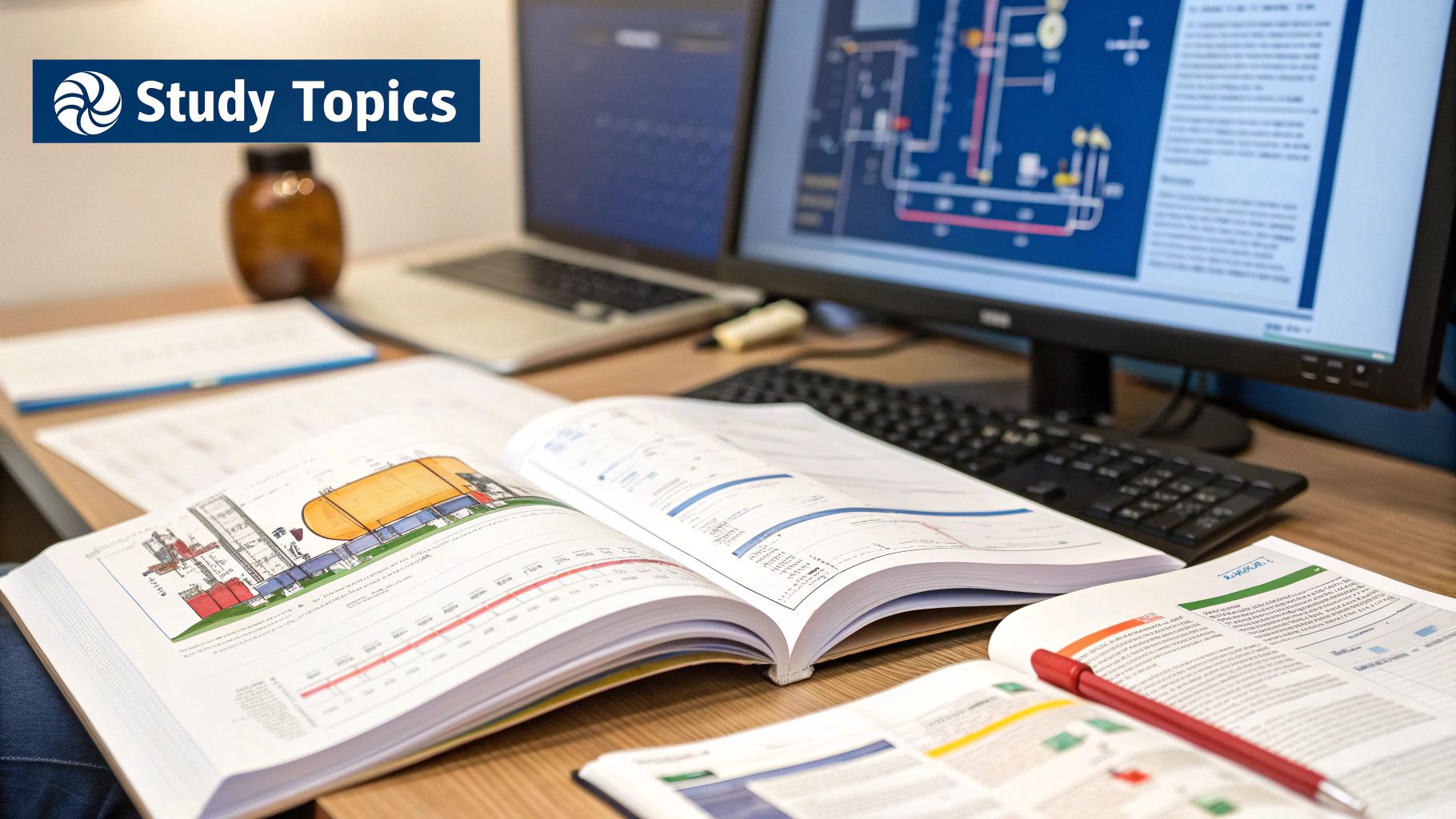
When you sit down for the test for tanker endorsement, you won’t find a bunch of tricky questions. It’s all about the real-world job of hauling thousands of gallons of liquid. The test focuses on safety. It makes sure you understand what that shifting weight is doing behind you.
Knowing what’s coming is half the battle. This isn’t about just memorizing rules from a book. It’s about understanding the forces at play. That way, you can react the right way on the road and keep everyone safe.
The Dangers of Liquid Surge
The biggest thing you need to master is liquid surge, or what we all call the "slosh" effect. Picture a half-full tank of water. When you hit the brakes, all that liquid rushes forward. When you speed up, it all slams back. That movement is surge. It can throw your whole rig off balance if you're not ready for it.
A strong forward surge can literally push your truck forward, even when you're braking. This is very dangerous, especially at intersections.
Imagine stopping at a red light. You brake smoothly, but the liquid behind you surges forward. It gives you a powerful shove right into cross-traffic. Understanding and expecting this is what makes a safe driver.
The test will ask questions to see if you know how to manage this force. You'll need to know how baffled tanks (tanks with dividers inside) help reduce surge. But—and this is a key point—they don't get rid of it completely.
High Center of Gravity and Rollovers
Tankers have a high center of gravity, especially when they're loaded. This makes them much more likely to roll over than a standard dry van. It's a simple fact of how they're built.
The test questions will focus on risky situations like these:
- Taking curves and on/off-ramps too fast: The outward push of the liquid and that high center of gravity is a recipe for disaster. Slow and steady is the only way.
- Making quick lane changes: Any sudden, jerky move can cause the liquid to shift hard. This puts you at risk of tipping the trailer.
- Driving on uneven or banked roads: You have to know how to change your speed and steering to stay stable.
Your knowledge of handling these specific situations will be checked. For an even more detailed breakdown of what to expect, our guide on the CDL tank endorsement test offers some great tips.
Safe Driving and Emergency Skills
Finally, the test covers specific driving skills for tankers. You'll need to prove you know the right way to brake. This is especially true with a partially loaded tank, where the surge is strongest. The key is smooth, steady pressure—no sudden stomps on the pedal.
To pass the written knowledge exam, you’ll need at least an 80% score. The test covers all these key topics for any vehicle with tanks over 119 gallons or with a total capacity over 1,000 gallons.
Knowing this stuff cold removes the guesswork. It makes the test feel a lot less scary. It also builds the confidence you need to prove you can do the job safely.
Creating a Study Plan That Works for You - Study for Tanker Endorsement Test
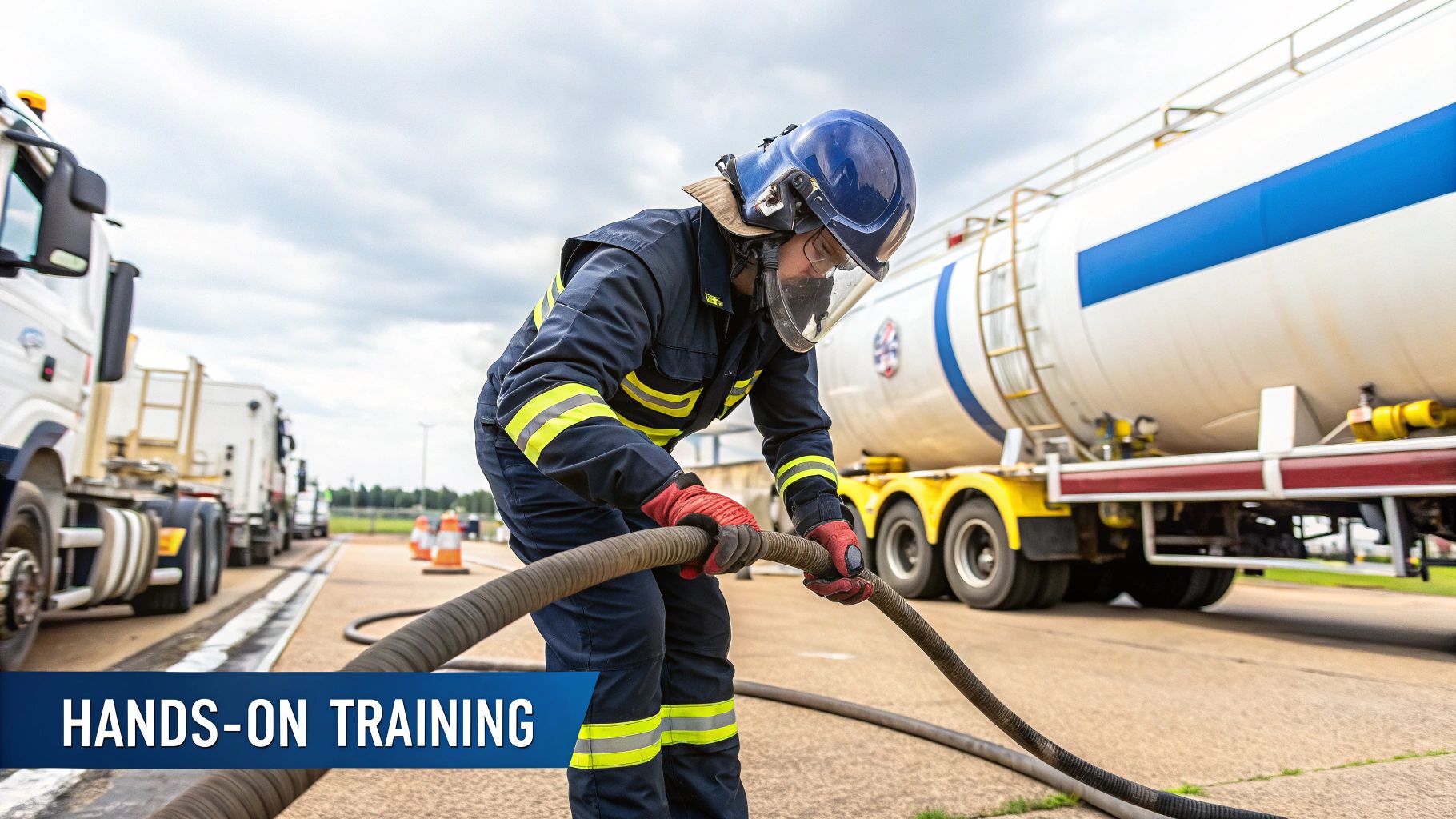
Trying to pass the test for tanker endorsement by just reading the CDL manual from front to back can be tough. It’s like looking at a map once and hoping you know every road. A smarter way is to build a study plan that fits your life and focuses on what you really need to learn.
You don't need to lock yourself in a room for eight hours. Honestly, even 30 minutes a day is enough time to nail down one topic. The real secret is being consistent and studying smart, not just studying long. That's how the information actually sticks for test day.
Pinpoint Your Weak Spots First
Before you start digging into the material, take a few online practice tests. The score doesn't matter right now. The whole point is to see where you're struggling.
Maybe you're good with vehicle inspection questions but the physics of liquid surge trips you up. Those practice test results give you a clear map of what to study first. This saves you from wasting hours on stuff you already know.
Think of it this way: You wouldn't replace all four tires if only one was flat. A practice test shows you where the problem is so you can fix it. Focus your energy where it’ll help your score the most.
Break It Down into Manageable Chunks
Once you know your weak areas, chop them into small, bite-sized topics. Instead of a big goal like "study surge," get specific: "learn how baffles affect surge."
Here’s a simple way to set up your study sessions:
- Session 1: Focus only on the high center of gravity and rollovers.
- Session 2: Dive into the different tank types—baffled, un-baffled, and smooth bore.
- Session 3: Learn the rules for outage and proper loading.
- Session 4: Review emergency braking techniques for tankers.
This method keeps you from feeling overwhelmed. You're just stacking one block of knowledge on top of another. That's way better than trying to learn it all at once.
Use Simple Tools That Work
You don’t need any fancy software. Some of the best tools are the simplest. Many veteran drivers will tell you they passed using good old-fashioned flashcards.
Just making the cards helps you learn. Writing the information down helps burn it into your memory.
Use them for key terms you need to know fast:
- Baffles: What are they and what do they not do?
- Outage: Why is leaving room for liquid to expand so important?
- Surge: How does it affect your braking and acceleration?
Keep a small stack in your pocket. You can flip through them during a 10-minute break or while waiting for a load. This is how you turn dead time into productive study time. Do this, and you’ll be ready to ace the test for tanker endorsement without burning out.
Scheduling Your Test and What to Expect on Test Day
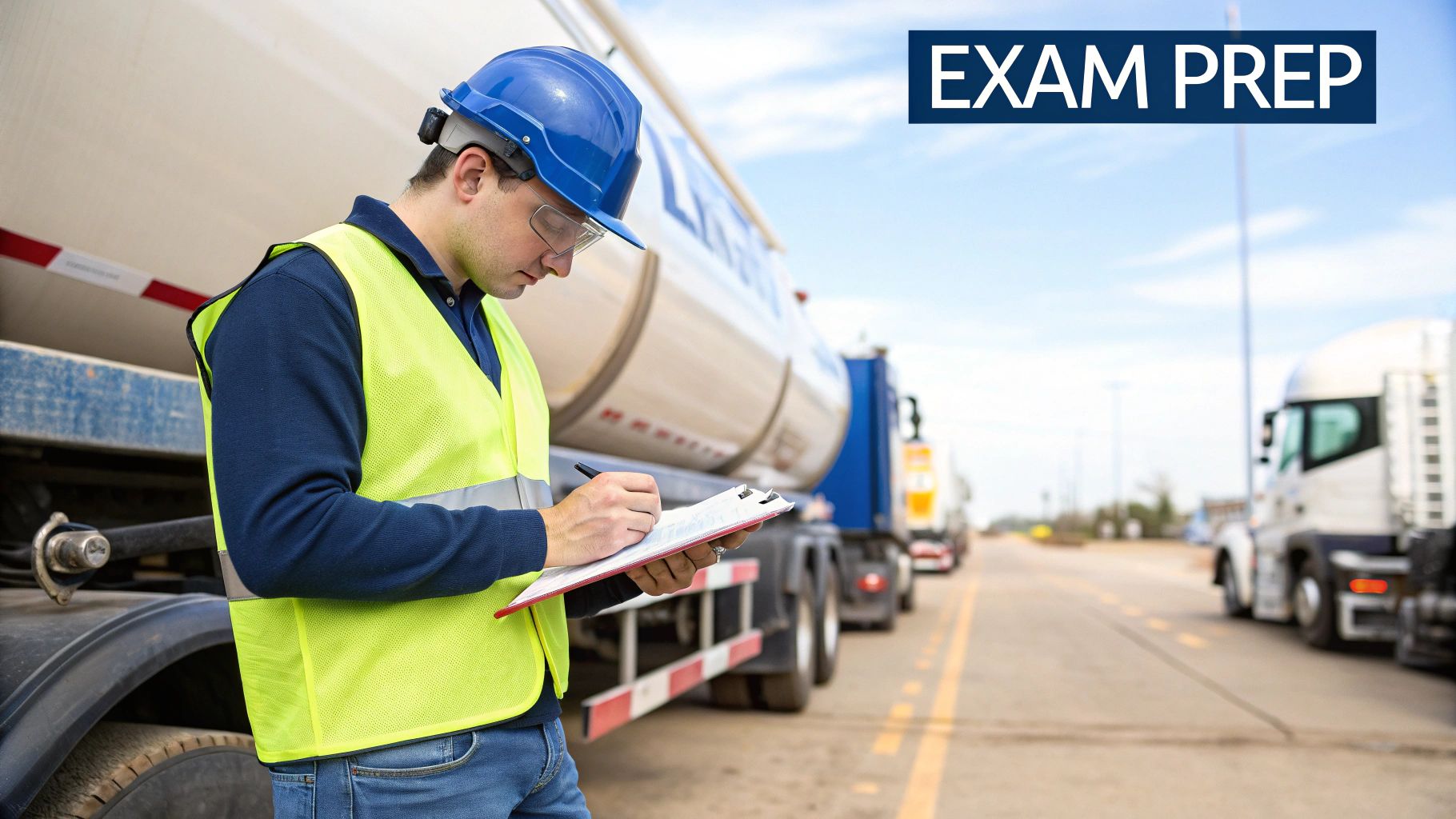
You’ve put in the hours studying, and now it’s time to make it official. The next step is scheduling and taking the actual test for tanker endorsement. I know, dealing with the DMV can be a pain. But getting your ducks in a row beforehand makes the whole thing go a lot smoother.
First things first, contact your state's DMV. Most let you book your test online or over the phone. Just be ready for a wait—appointment slots can fill up fast. Don't put this off; get it on the calendar as soon as you feel ready.
What to Bring on Test Day
Nothing’s worse than getting turned away at the DMV because you forgot a piece of paper. Think of it like a pre-trip inspection for your paperwork. Before you leave the house, double-check that you have everything.
Here’s a quick list of what you’ll probably need to show:
- Your current, valid Commercial Driver's License (CDL).
- Proof of address (a recent utility bill or bank statement usually works).
- Your DOT Medical Examiner's Certificate (your Med Card).
- Payment for the test fee, which is different in every state.
Think of it this way: having your paperwork in order is the first test you have to pass. It shows you’re a pro. Nailing this part lets you focus on what really matters—passing the exam.
Your Game Plan for Test Day
How you start the morning of your test can make or break it. Don't just roll out of the bunk five minutes before you have to leave. Give yourself the best shot with a few simple steps.
A good night's sleep is a must. Being rested sharpens your focus. In the morning, eat a good meal because your brain needs fuel. And this is a big one: show up at least 15-20 minutes early. Rushing in at the last minute will only raise your stress.
Once you’re in the test room, take a deep breath. You've prepared for this. Read every question carefully, then read it again. It's easy to misread something when you're feeling the pressure. If a question stumps you, mark it and move on. You can come back to it later.
A great plan is to answer all the questions you know for sure first. It builds confidence. This helps you calmly work through the whole test for tanker endorsement.
Common Mistakes to Avoid on the Tanker Test
One of the best ways to get ready for the test for tanker endorsement is to learn from others' mistakes. If you know what trips people up, you can walk in feeling confident. You can avoid those simple errors that might cost you a passing score.
This isn't just about passing a test. It's about building a solid foundation for your career from day one.
When you're looking at that test screen, it's easy to misread a question under pressure. I've seen plenty of drivers get tripped up by the details. This is especially true on questions about liquid surge or emergency braking with a heavy, sloshing load.
Always, and I mean always, read each question twice. Make sure you know exactly what they're asking before you pick an answer.
Even before the test, simple paperwork mistakes can stop you. Imagine showing up ready to go, only to be sent home because your med card expired last week. Do yourself a favor and double-check all your documents.
Misunderstanding Critical Concepts
The tanker test wants to see if you really get the physics of hauling liquids, not just if you've memorized words. A lot of drivers stumble on these common mix-ups:
- Confusing Baffles and Bulkheads: They both divide a tank, but they do different jobs. Baffles have holes to slow down the liquid surge. Bulkheads are solid walls that make separate compartments. Knowing which is which is a must.
- Forgetting Surge Is Worst in a Partial Load: This is a big one. It feels weird, but a half-empty tank is more dangerous than a full one. That empty space gives the liquid room to build up a lot of force. This makes the surge powerful and hard to predict.
- Underestimating Braking Distances: If you're used to a dry van, you have to retrain your brain. That forward surge from thousands of gallons of liquid can push you right into an intersection, even if you're hard on the brakes. You need way more room to stop.
These aren't just test answers; they're key ideas that keep you and everyone else safe. Many of these same issues pop up on the general CDL test, too. It's smart to look at common mistakes that cause CDL test fails, as many of the same ideas apply here.
The High Cost of Driving Without an Endorsement
Let's be clear: trying to cheat the rules is a bad idea. The penalties for driving a tanker without the right endorsement are tough. They can put a sudden end to a long, good career. We're not talking about a small fine here.
This is serious business. Getting caught without the N endorsement when you need it isn't just a ticket. It's a direct threat to your CDL and your ability to make a living.
Since the FMCSA updated its rules, they've been very strict. Under federal rules, driving a tanker without the right credentials can get you fines up to $5,000 per violation. You could also have your license suspended for up to 90 days.
It's a risk no professional driver should ever take.
Ready to get the training you need to ace the test on your first try? ELDT Nation offers a 100% online, FMCSA-approved theory course you can finish on your own schedule. We make learning the material easy and report your completion directly to the FMCSA. Get started with ELDT Nation and unlock better jobs and bigger paychecks.
